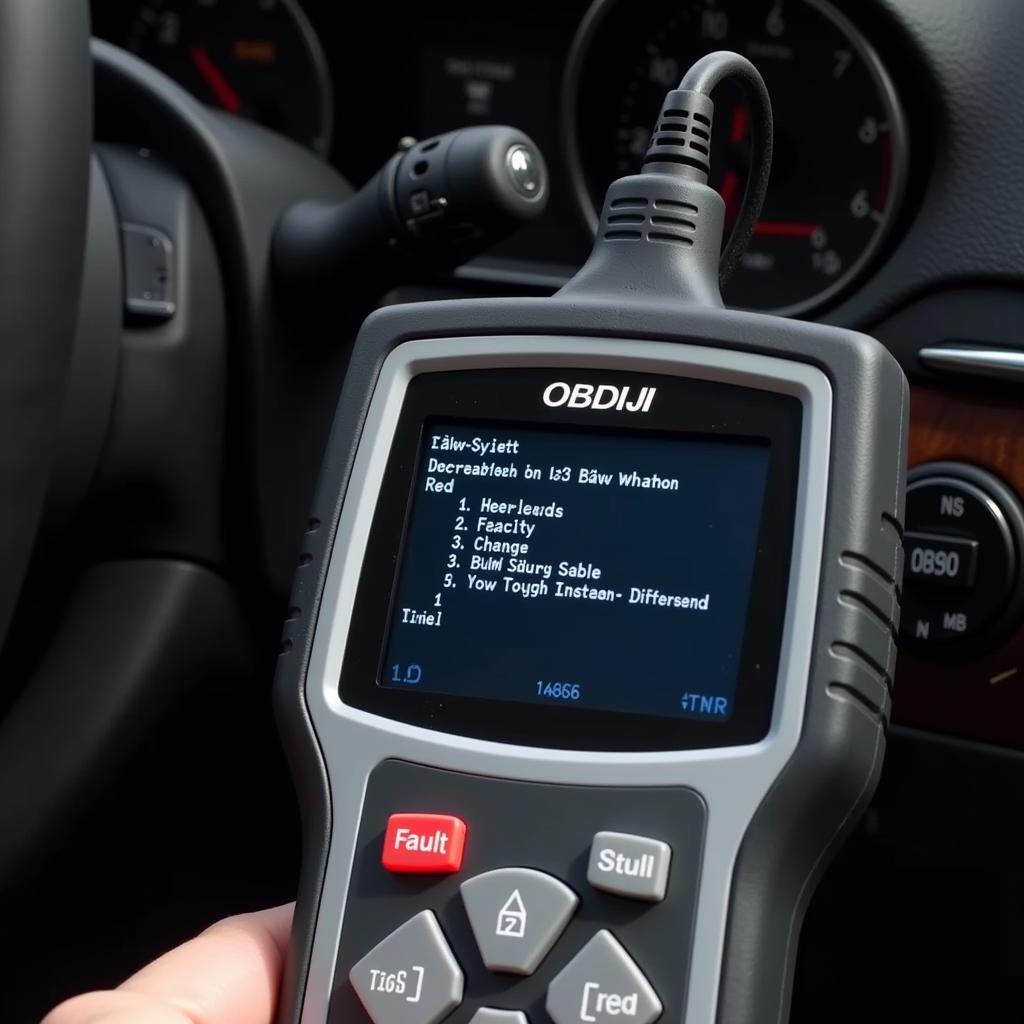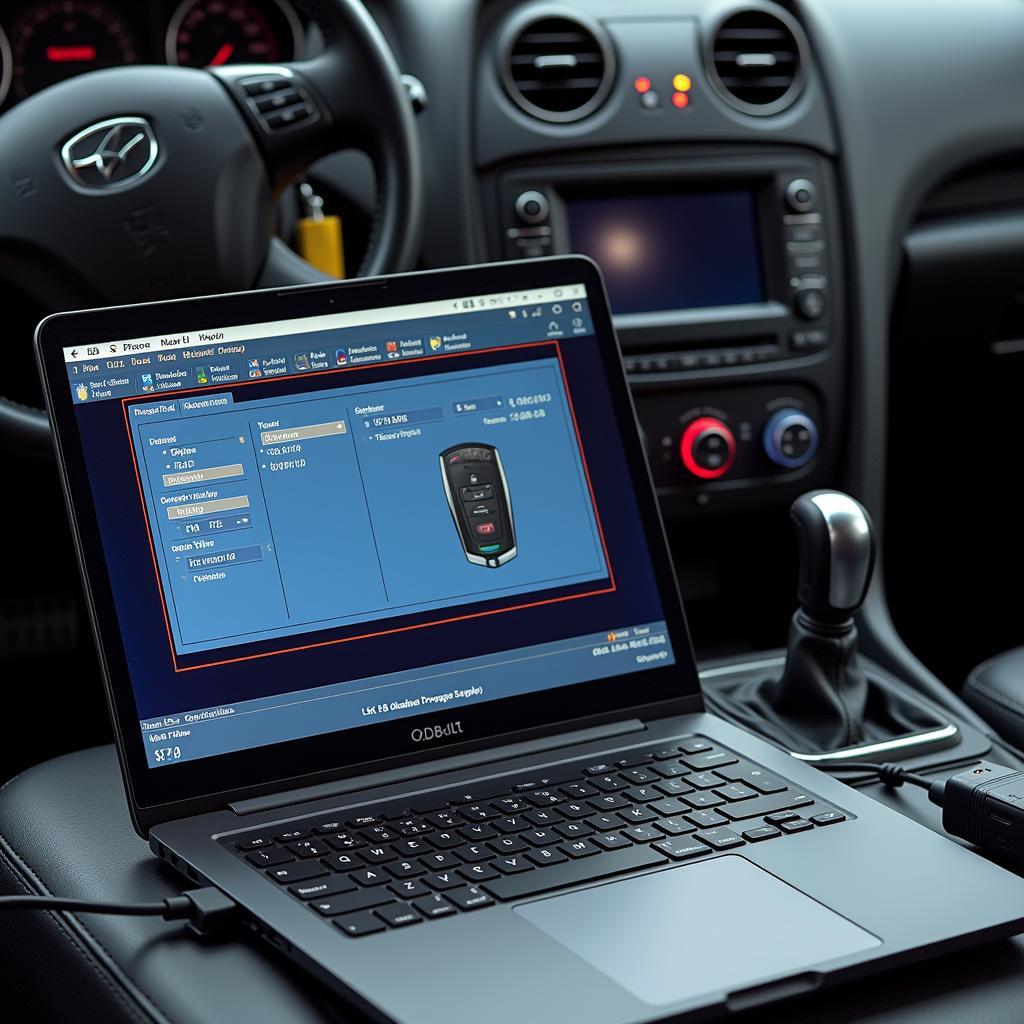If your Mercedes E320 is displaying a brake warning light even with new ceramic brake pads, you’re not alone. This issue can be frustrating, but understanding the potential causes and solutions can save you time and money. This article will guide you through troubleshooting the brake warning light on your E320, specifically when using ceramic brake pads.
Understanding the Brake Warning Light in Your Mercedes E320
The brake warning light is a crucial safety feature in your E320. It can indicate several issues, from low brake fluid to more serious problems with the braking system. Ignoring this light could lead to dangerous driving conditions. While sometimes a simple fix like topping off brake fluid resolves the issue, other times a more in-depth diagnosis is needed, especially when new ceramic brake pads are involved.
Why Ceramic Brake Pads Can Trigger the Brake Warning Light
Ceramic brake pads are popular for their performance and low dust production. However, they can sometimes trigger the brake warning light in certain Mercedes E320 models. One common reason is the wear sensor. These sensors are small wires embedded within the brake pad material. As the pad wears down, the sensor eventually makes contact with the rotor, completing a circuit and illuminating the warning light. Sometimes, even with new ceramic pads, the sensor can be faulty, incorrectly positioned, or too close to the rotor, triggering the light prematurely. Another possibility is incompatibility between the specific ceramic pad formulation and the E320’s braking system. Some aftermarket pads might not be perfectly calibrated for the E320’s sensitive electronics.
Troubleshooting the Brake Warning Light with Ceramic Pads
First, check your brake fluid level. Low brake fluid is the most common cause of the brake warning light. If the fluid level is low, top it off with the correct DOT specification. If the light persists, inspect the brake pad wear sensors. With the wheel removed, visually examine the sensor on the new ceramic pads. Ensure it’s correctly positioned and not damaged. Sometimes, a slight adjustment can resolve the issue.
 Checking Brake Pad Wear Sensor on Mercedes E320
Checking Brake Pad Wear Sensor on Mercedes E320
Advanced Diagnostic Techniques
If the basic checks don’t resolve the problem, you might need more advanced diagnostics. Using a professional-grade OBD-II scanner can pinpoint the specific fault code triggering the warning light. This information can narrow down the possible causes and help you avoid unnecessary repairs. Sometimes, the brake warning light can be related to other systems, such as the ABS or ESP. A comprehensive scan can rule out these possibilities.
Can a faulty ABS sensor trigger the brake warning light?
Yes, a faulty ABS sensor can sometimes trigger the brake warning light, especially if it’s sending incorrect signals to the brake control module.
What if the warning light still persists after replacing the sensor?
If the warning light persists after replacing the sensor, there might be a deeper issue with the braking system, such as a faulty brake control module or wiring problem.
“When dealing with complex electronic systems like those in a Mercedes E320, accurate diagnosis is key,” says John Miller, Senior Automotive Diagnostic Technician at German Auto Solutions. “Using the right tools and understanding the intricacies of the braking system can save you both time and money.”
 OBD-II Scanner Diagnosing Mercedes E320 Brake Issue
OBD-II Scanner Diagnosing Mercedes E320 Brake Issue
Remote Diagnostic and Programming Solutions
In today’s connected world, remote diagnostics and programming can offer convenient and effective solutions. Specialized software allows technicians to access your vehicle’s systems remotely, diagnose the problem, and even reprogram certain modules without needing physical access to the car. This can be particularly helpful for resolving software-related issues that might be triggering the brake warning light.
“Remote diagnostics is changing the way we approach car repairs,” adds Maria Sanchez, Lead Software Engineer at AutoTech Solutions. “It provides a quick and efficient way to identify and resolve complex issues, especially with advanced braking systems.”
Conclusion
A persistent brake warning light on your Mercedes E320, even with new ceramic brake pads, requires careful investigation. By following these troubleshooting steps, you can pinpoint the cause and get your E320 back on the road safely. If the issue persists, consider seeking professional assistance or exploring remote diagnostic options. Addressing the brake warning light promptly ensures the safety and reliability of your Mercedes E320.
FAQ
- Can I drive my E320 with the brake warning light on? While possible, it’s highly discouraged. It indicates a potential problem with your braking system and driving could be dangerous.
- How much does it typically cost to replace a brake pad wear sensor? The cost varies, but it’s generally a relatively inexpensive repair.
- Are all ceramic brake pads compatible with the E320? Not necessarily. Always consult your owner’s manual or a qualified mechanic to ensure compatibility.
- Can I replace the brake pad wear sensor myself? Yes, with basic mechanical skills and tools, you can often replace the sensor yourself.
- How often should I check my brake fluid level? It’s a good idea to check your brake fluid level at least once a month.
- What is the difference between ceramic and metallic brake pads? Ceramic pads offer better performance, less dust, and quieter braking, but can be more expensive than metallic pads.
- Can I use remote diagnostics to fix the brake warning light on my Mercedes E320 with ceramic pads? In some cases, yes. Remote diagnostics can identify software-related issues and potentially resolve them through reprogramming.


